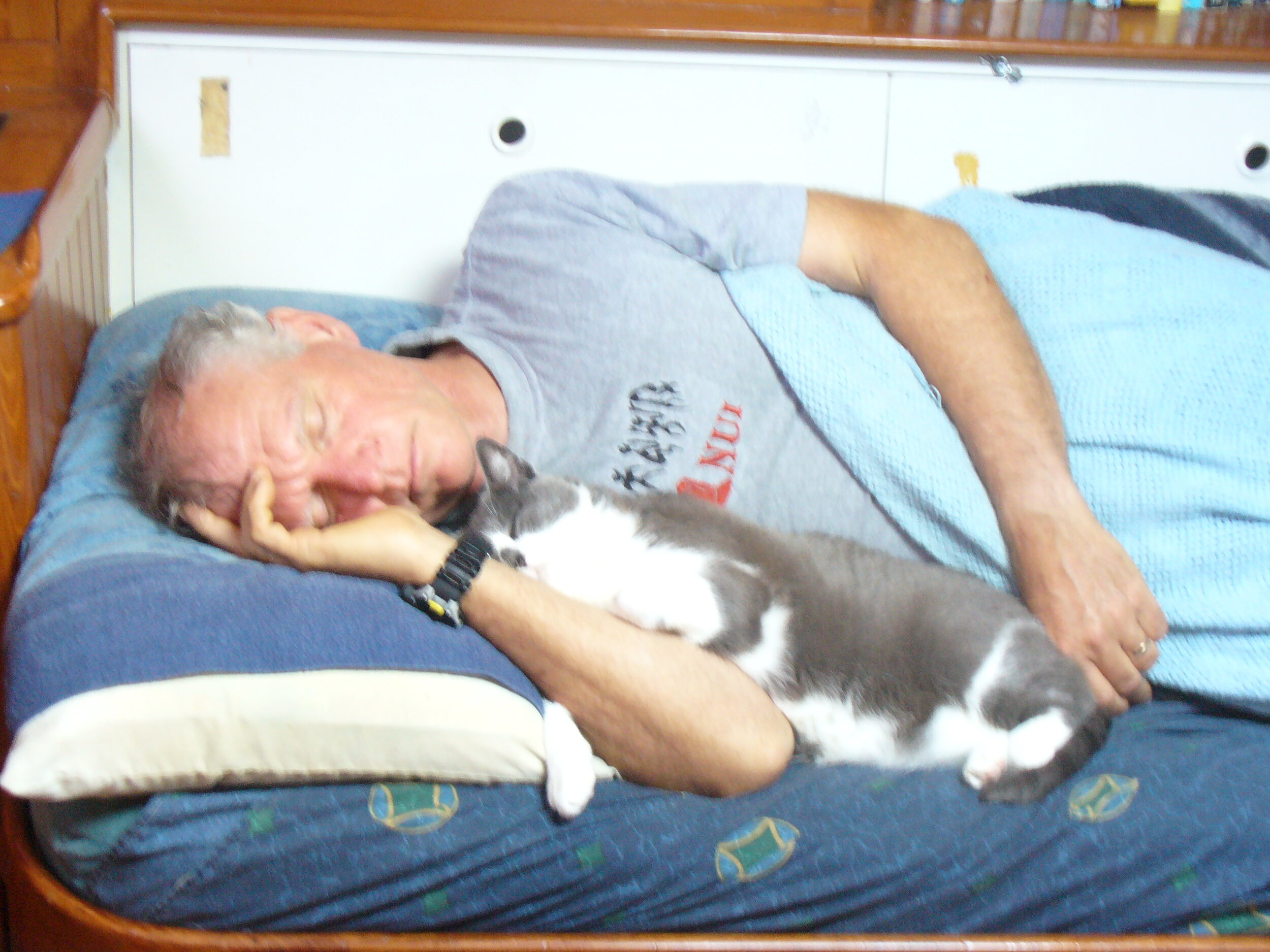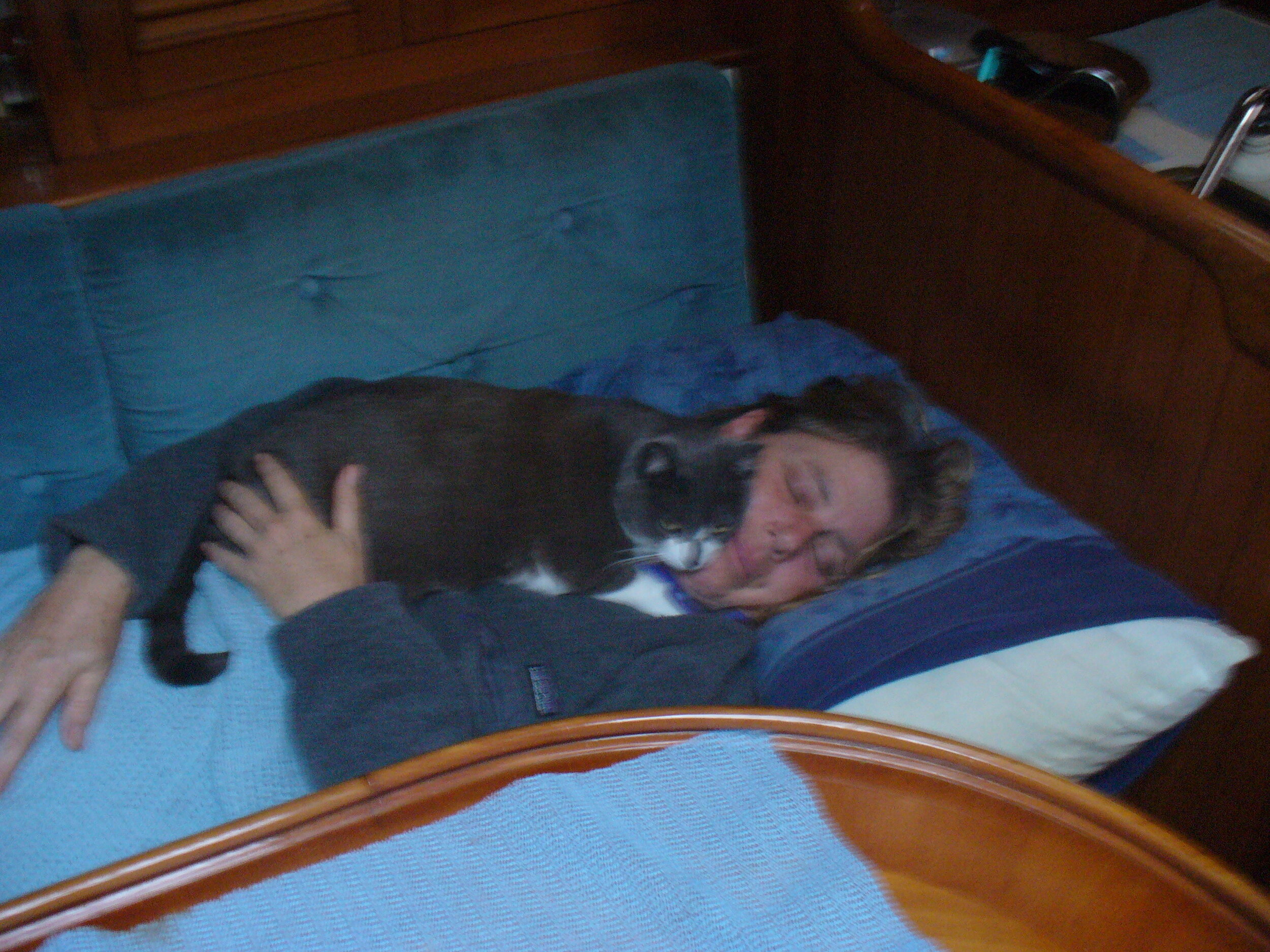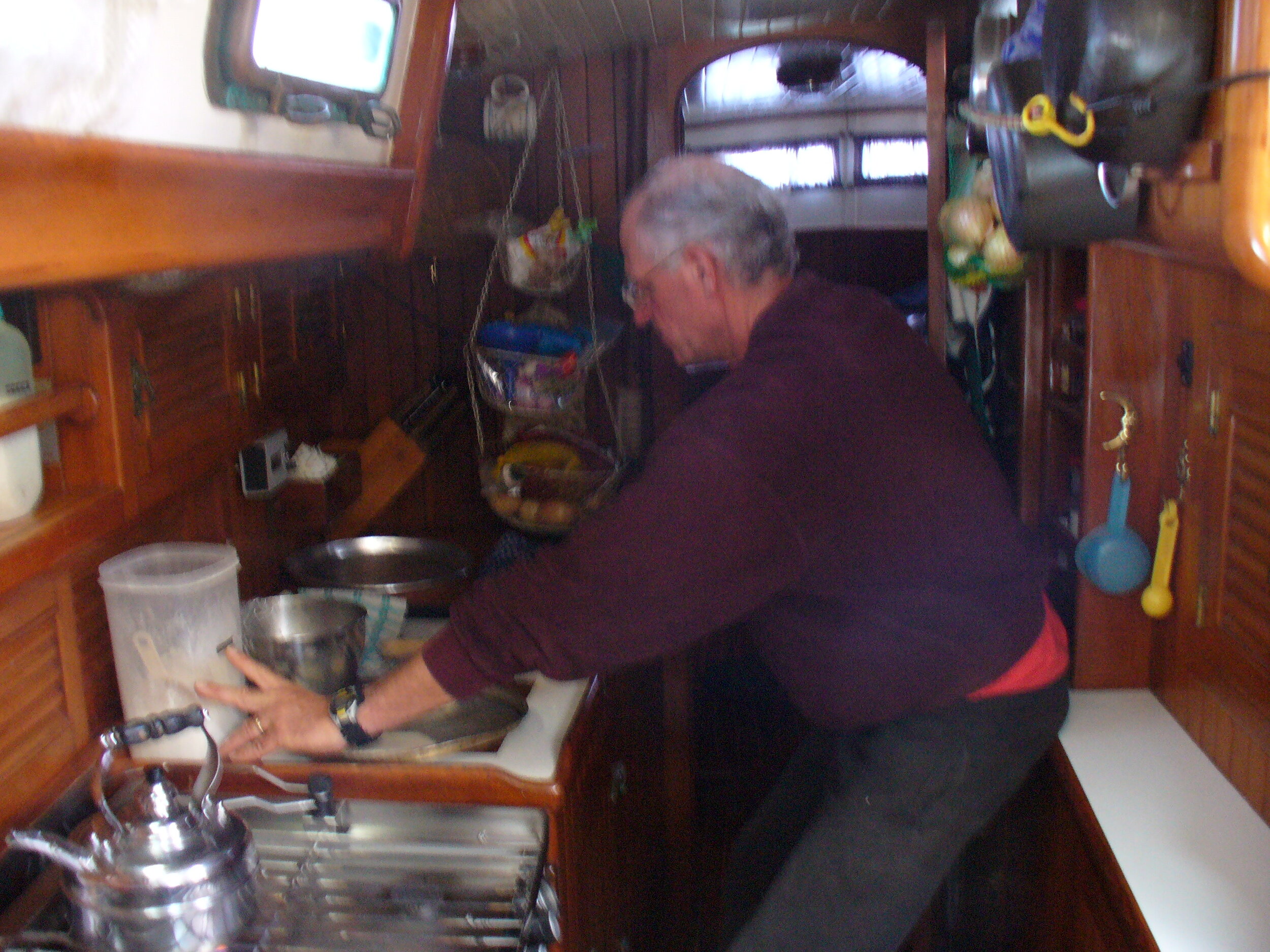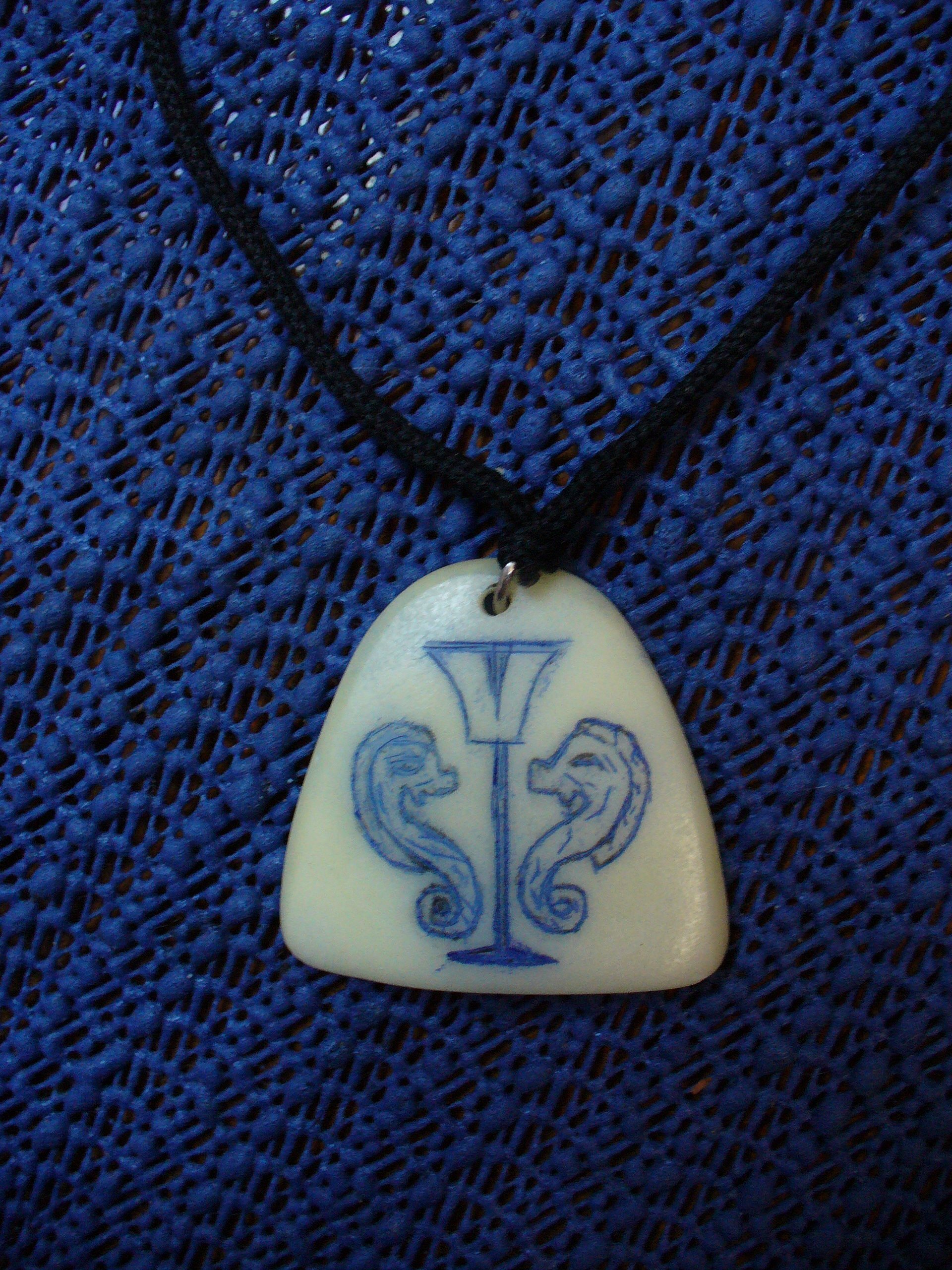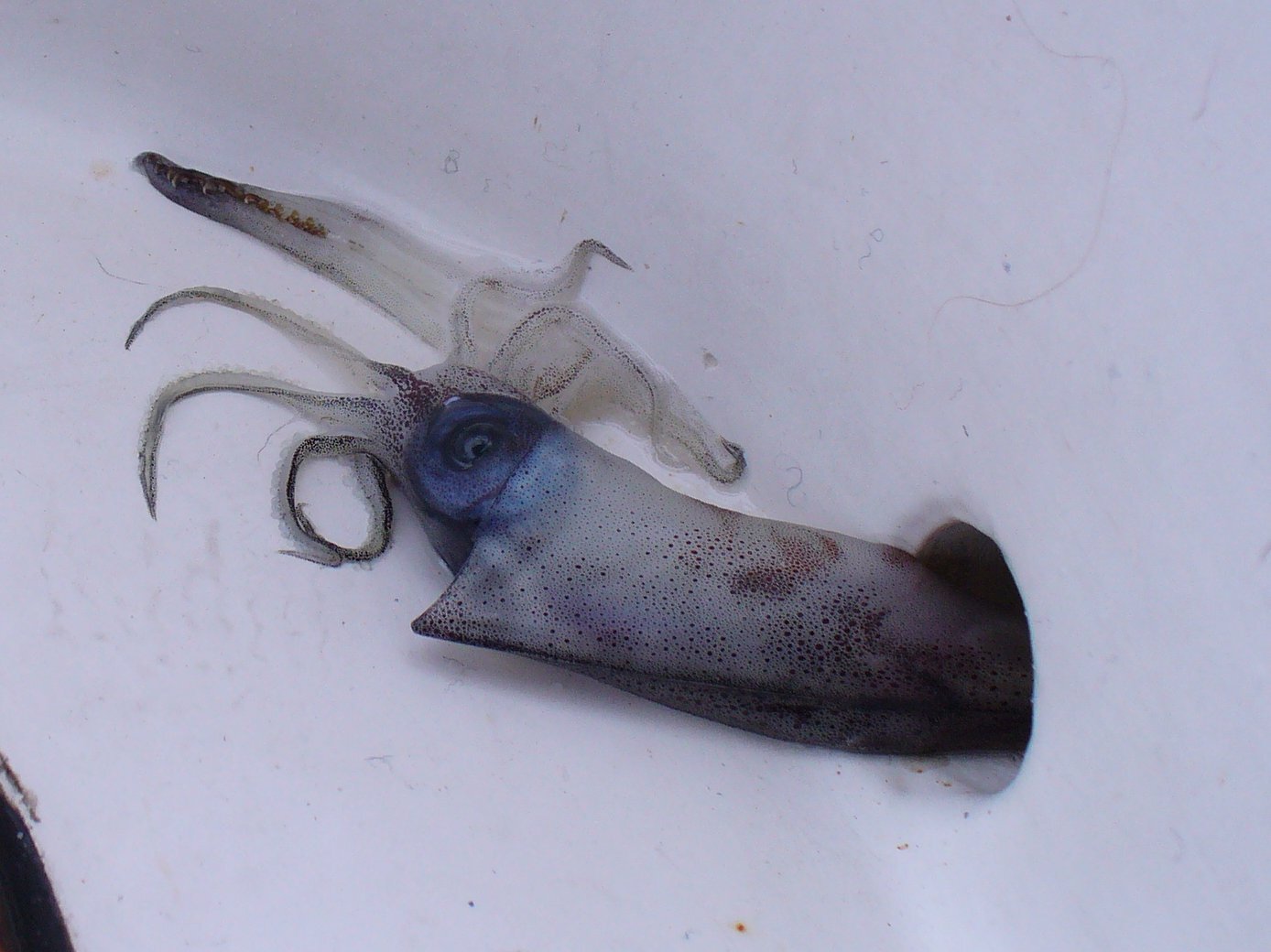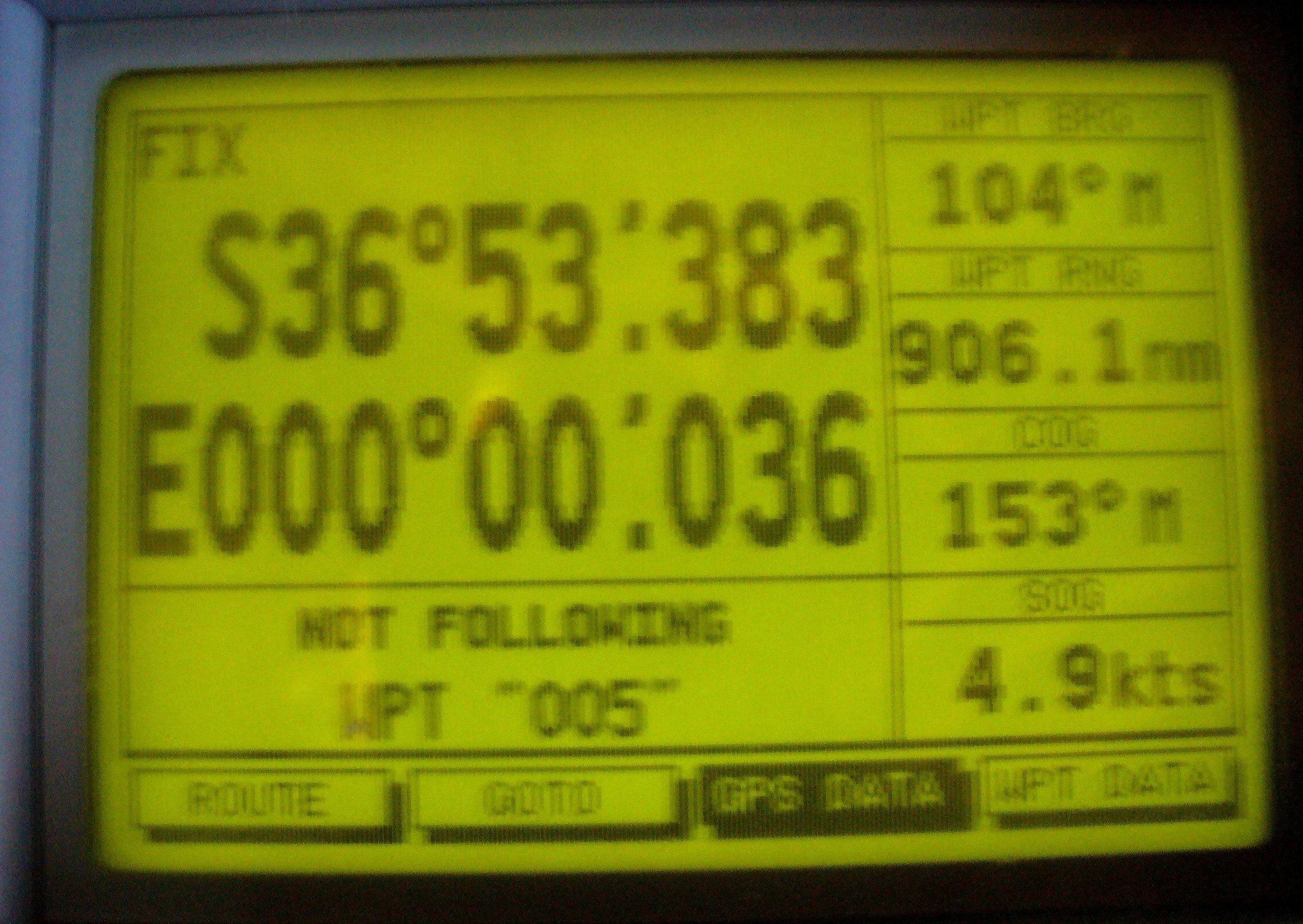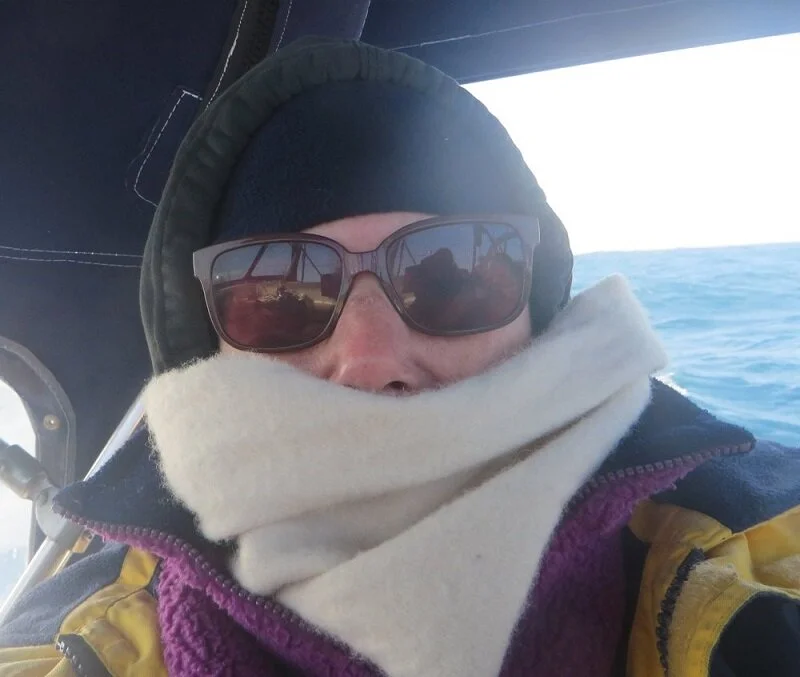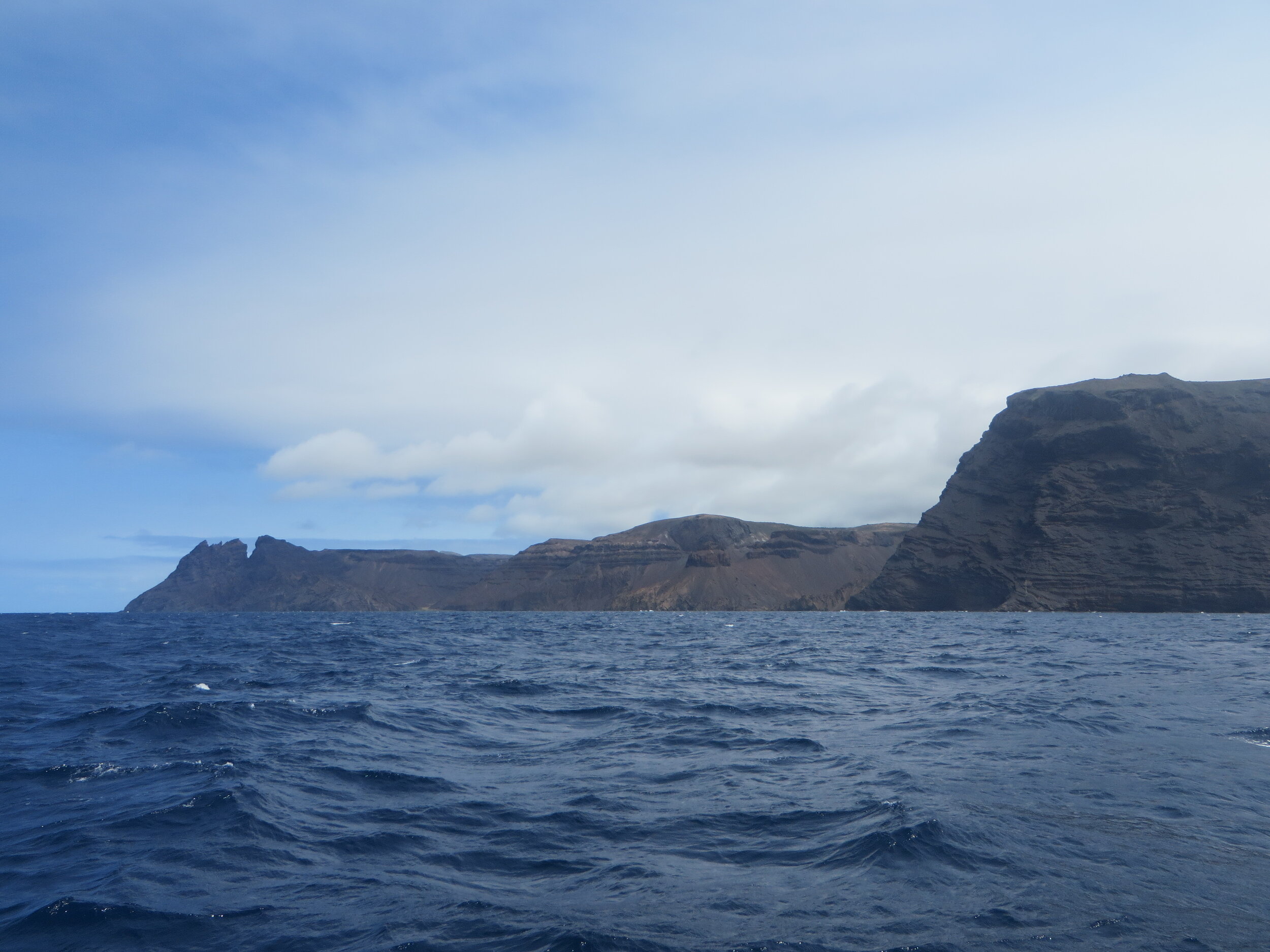Isolated Islands, Huge Waves and Long, Long Passages
The ancient Romans named the Atlantic after the Atlas Mountains which rise at the western end of the Mediterranean Sea and, in ancient times, marked one of the limits of the known world. The world's second largest ocean, the Atlantic makes up about 26% of Earth's ocean area and 17% of its total surface area. Though a debate rages as to which navigator crossed the Atlantic first, our Atlantic crossings gave us a new awareness of isolation, vastness and how small we really are.
Atlantic Ocean Facts…
Area: About 34 million sq. mi.
Greatest distances: North-south--9,000 mi. excluding the Arctic Ocean;
East-west--5,500 mi
Average depth: 12,100 ft.
Greatest depth: 28,232 ft. in the Puerto Rico Trench.
Surface temperatures: Highest, about 86° F, near the equator in summer.
Lowest, 28° F, at and near the boundary with the Southern Ocean in winter. Note we saw nearly 95 degrees in Ascension!
Tides: Highest--Over 50 ft. in the Bay of Fundy, Canada.
Lowest--less than 1.5 ft. in areas of the Gulf of Mexico and the Mediterranean Sea.
We have crossed the Atlantic three times: Uruguay to South Africa in 2006, South Africa to Charleston, USA in 2007 and the last time from Namibia to South America in 2015. We were fortunate enough to visit three South Atlantic islands, all British Overseas Territories (BOTs,) en route. Each provided a different look at isolated island cultures and a better understanding of how new technology has affected the global community. Click on the links below to tour these seldom-visited islands with us.
Ocean passages are long even if you have the opportunity to stop along the way. In the early days (2006), we didn’t have the technology nor the inclination, I guess, to document our passages though we did take some photos and managed to keep a handwritten journal. Our final passage across the Atlantic provided the best overview of what a long passage is like.
2006 Passage - Piriapolis, Uruguay to Cape Town, South Africa via Tristan da Cunha
Life at sea is punctuated with sunrises and sunsets, on-watch/off-watch, eating and finding diversions to keep ourselves occupied. Above, a gorgeous Atlantic sunrise.
Our first crossing of the Atlantic was also our first trans-ocean passage. The decision to cross the Atlantic was made when we were in Ushuaia, Argentina and feeling tired of being so cold. Once we headed north up the Argentine coast, it seemed foolish to slog back down and then go west so we changed our minds as cruisers often do and after a relaxing five months touring Argentina, Paraguay and Uruguay and working on Nine of Cups, we headed out on 14 November for Cape Town, South Africa. This would be our longest passage to date, nearly 4,000 nautical miles. Our goal was to arrive in Cape Town for Christmas.
All in all, it was a pleasant passage. After our usual initial bout of seasickness, we were up and about and enjoying our life at sea. There was always something to do or to fix, we read, talked and planned. It's easy to lose track of day and date so we concocted lots of celebrations to differentiate the days. Some were easy... Marcie's birthday and Thanksgiving. Others took some pondering... GMT Day (the day we set our clocks to GMT time), Prime Meridian Day, 1,000 Miles Under the Keel, 2,000 Miles Under the Keel, 1,000 Miles Left to Cape Town Day, Tristan da Cunha Day. There was no dearth of celebrations aboard. The biggest thrill of the passage, however, was arriving at Tristan da Cunha and having the opportunity to go ashore. We’d been in touch with the Tristan Radio Operator, Andy Ripetto, since our departure from Uruguay and stayed in touch with him via ship’s radio until we arrived in Tristan. Andy was there to welcome us ashore.
Only two nights were spent at Tristan and the weather changed abruptly. We reluctantly needed to move on. We still had 1,500 miles to Cape Town and the days were ticking quickly on till Christmas. We arrived in Cape Town on 21 December after a rough last day of 35 knot winds on the nose, nasty waves and a north setting current. The wind subsided and the sun appeared as we sailed into Table Bay.
Sailors say that arriving at a port and departing a port are the two best days and we agree. After a long passage, sighting land and stepping ashore is absolutely wonderful. After being in port for awhile, the excitement and anticipation of leaving again for a new destination is just as wonderful as the arrival was. Adventure lies ahead.
2007 Passage - Saldanha Bay, South Africa to Charleston, SC, USA via St. Helena & Ascension Islands
Our diagonal route from South Africa to South Carolina
Our second passage of the Atlantic ended up being just two months later. We had arrived in South Africa just before Christmas 2006 and departed Cape Town on 20 February. This would be our longest passage ever ~7,300 nautical miles and 73 days to Charleston, a diagonal route across the Equator from the tip of South Africa to the South Carolina coast. To put the timeline into perspective, we left around Valentine’s Day and arrived near Mother’s Day and celebrated Easter en route. It's always hard to figure out why people do the things they do? "Why ever would you sail from Cape Town to the US if you could fly there?", people asked us. Well...because we could! Our oldest son was getting married and we wanted to attend the wedding and all the associated festivities AND we wanted to bring Cups home and not leave her stranded in South Africa for several months.
It was a beautiful, calm morning and backing out of the slip and down the canal was not difficult…until the gearshift lever broke off in David’s hand. Yikes! He managed to maneuver us away from the other boats and against the sea wall (all in reverse gear, mind you). We scrunched the rub rail on the starboard aft quarter, but otherwise we were no worse for the wear. Heading out into the harbor, the autopilot began doing 360s…what’s going on? It settled down after a few miles. Things come in 3s! As we let the jib out, the furler seemed stiff and wasn’t working correctly. David found the problem immediately…it was broken and definitely needed repair before attempting a 7,000+ mile passage. Rather than return to Cape Town, we opted to motor-sail to Saldanha Bay, about 60 miles north. We were able to pick up a free mooring, compliments of the Saldanha Bay Yacht Club where we spent two lovely days while David effected the furler repair.
We left Saldanha Bay on 22 February. Our route was pretty much northwest to St. Helena from Saldanha Bay. We covered ~ 1,700nm in 12 days averaging 140+ miles/day … a pleasant downwind sail for the most part. We saw very few ships (3), no planes and after the first few days, very few birds. We were NOT seasick which we attributed to extra days on Stugeron because of the laydays in Saldanha. We did lots of reading as usual. The days went by quickly and before we knew it “Land ho!’.
Our time in St. Helena was awesome. You can read more about it by clicking this link. The passage between St. Helena and Ascension Island was a quick 5-day, 700 nautical mile run. The weather held and we arrived at Ascension and dropped anchor. As required, we had requested permission to come ashore at Ascension in advance of our arrival and had received it. They were waiting for us. Read about our Ascension Island adventures here.
We hauled anchor on Sunday, 25 March. David hauled the anchor manually... the windlass had broken and this time David determined that it was irreparable. We had originally planned to stop in the Caribbean, but instead, with a non-functioning windlass, we decided to head straight to the States and set our course for the Equator and then for Charleston, SC. Southeast trades carried us off the island and soon Ascension Island had vanished beyond the horizon.
North of Ascension, we crossed the Equator for the 4th time on April Fool’s Day at 0847 and offered a tot of rum to Neptune. We thought we’d celebrate with a beer or wine, but it wasn’t at all appealing.
As usual, David had his share of repairs to make en route. This time the batteries were not charging properly and he determined they were sulfated and needed equalizing We noticed large areas on the UV of the jib had come unstitched. We lowered the jib, hauled the sewing machine on deck and managed the repair without too much difficulty.
7,350 nm and 73 days after leaving Cape Town, RSA, we arrived in Charleston, SC completing not only our longest voyage, but in actuality, a circumnavigation of South America!
2015 Passage - Luderitz, Namibia to French Guiana, South America via St. Helena Island
Leaving Luderitz, Namibia
BRRRr… It’s cold out there
We finally left Lüderitz, Namibia bound for St. Helena Island on a cold, sunny August morning … and cold and raw it remained for days. Want to sail along with us on this passage? Click the link!
We also have a great video that gives you a feel for what a long passage at sea on sailboat is like.
Warning … bundle up! Remember when you’re south of the Equator, August is mid-winter. We arrived at St. Helena Island on our 13th day at sea, having sailed 1,396 nautical miles.
Passage stats:
Total miles sailed - 1,396
Total days: 12.25 days (294 hrs)
Average speed: 4.75 knots
Hours motored during passage: 4
Come ashore and enjoy our second visit to St. Helena here!
Miles to go: 3,215
We had a false start on our planned departure day. We'd checked out the day before and all was ready on Nine of Cups ... except us. We dilly-dallied around till it was well into the afternoon and then the stove solenoid seemed to be having a problem and we finally decided to spend another day on the mooring. Port Control was most obliging, which was good because we'd spent the last of our St. Helena pounds on a bottle of St. Helena-produced rum! I think we've been running around so much on the island, we needed to get back into passage mode, and a day and night on the boat was just what the doctor ordered.
If you’re so inclined, you can follow our Atlantic passage from St. Helena to French Guiana ... day by day by day. Or maybe you’d like to read our favorite highlights of the crossing? Click here. Or maybe you’re interested in an Atlantic Crossing Highlights video. You’ve come to the right place.
Want a good laugh? Check out this ‘Bob the Stink’ flying fish video. We were obviously bored.








